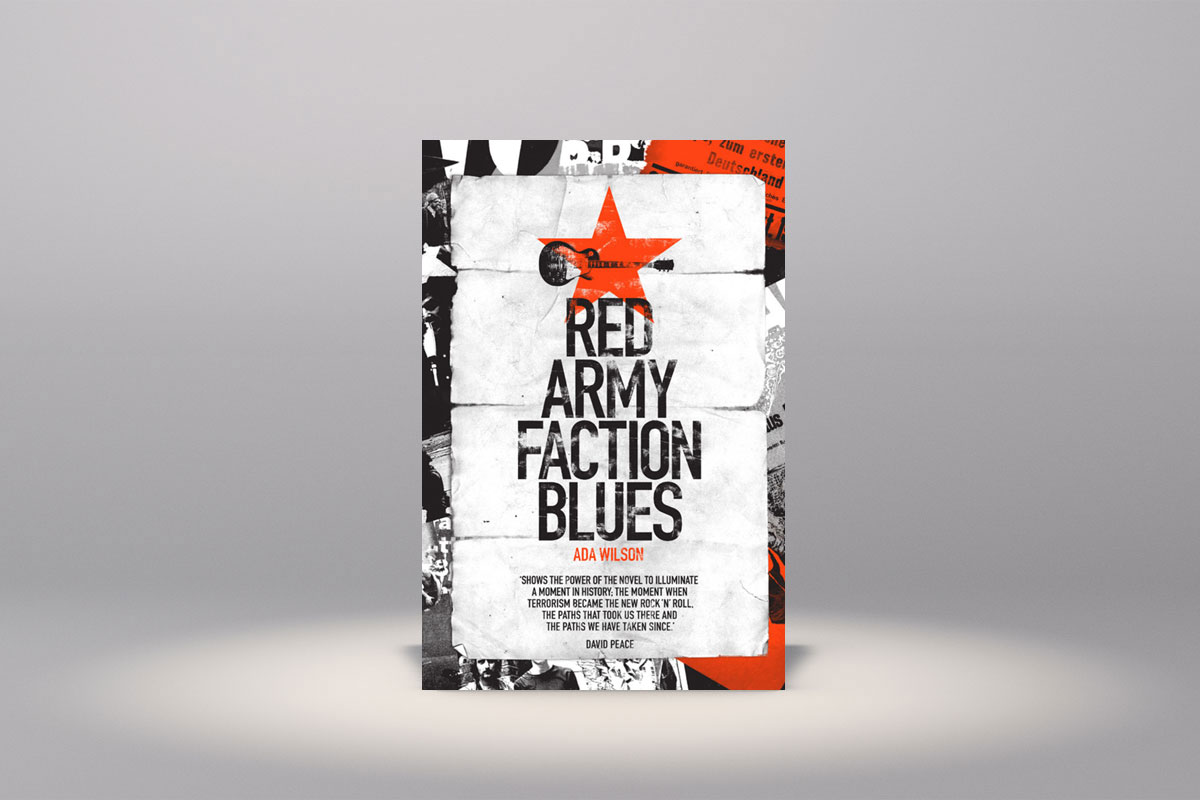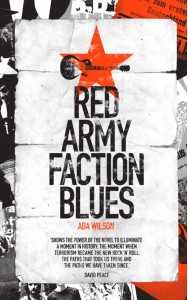Some text we wrote about Ada Wilson's novel Red Army Faction Blues just prior to its release.
It’s amazing how relevant Red Army Faction Blues is to the daily news on a continual basis. The coalition, the student riots, the consumer riots in the summer, agent provocateurs infiltrating student groups, unpopular foreign wars, popular revolutions, dubious relations with politicians and the media, the politics of social networks – the list goes on and on. All of these things and more can be found inside this book, set in Berlin in the late 1960s and in England in 1989.
The book could be described as faction – in the mould of David Peace. Its genesis occurred when the author was curious to find out what actually happened on the infamous occasion when Peter Green from Fleetwood Mac reportedly took some strong LSD at a party at the High Fisch commune and, so everyone says, was never the same since. He subsequently went into a twenty-five year period of isolation and was in and out of mental institutions. Ada Wilson discovered who it was that met Peter Green at the airport that day and took him to the party. It was a man called Rainer Langhans and his girlfriend at the time Uschi Obermeir, a famous German model who later counted Mick Jagger and Keith Richards amongst her lovers.
Ada made contact with Rainer and they subsequently became friends. Through discussions with Rainer, he unearthed stories about a social and political movement that started in Germany in 1967. They were a group of students who were responding to the guilt of their fathers and resisting what that guilt was leading the country too i.e. unfettered consumerism as introduced by their American occupiers. They rallied behind the first big anti-consumerist philosophy as outlined by Herbert Marcuse in his book The One Dimensional Man and were vocal in their opposition to consumerism, the war in Vietnam and the ongoing trouble in the Middle East. They got involved in high-spirited protest, which grew in popularity and caused embarrassment to the West German government. They also caught the attention of the East German government, who were keen to highlight and take advantage of dissent on the western side of the wall. So, pretty soon the powers that be started to infiltrate them. Within a few years these high minded political protests were heading in darker directions, with escalating violence, drug use and terrorism.
Langhans told Ada about one particular agent provocateur called Peter Urbach. The whole gang saw him as one of their own, a working-class man who helped them out and fixed things for them. It was only later in 1971 when he revealed his true identity by appearing in a courtroom opposite them as a witness for the prosecution. After that, he disappeared, probably to the USA. Looking back on his behaviour, they started to see the pattern. He was the one who was supplying the drugs, guns, petrol and bombs. Rainer and his cohorts didn’t get involved in the more sinister side of the activities – they were more interested in the pursuit of individual freedoms (they were reportedly the inspiration for John Lennon and Yoko Ono’s famous bed-in) but characters like Andy Baader and Gudrun Ensslin did take Urbach’s bait. So it wasn’t hard to see that what later became the Red Army Faction (the Baader-Meinhoff gang) was in fact encouraged from within the state apparatus, both East and West, and was supported by the ever present media apparatus.
In writing the book, Ada positioned Urbach as the narrator, which gives it a wonderful immediacy and also a sense of the mysterious operations of an undercover agent. The link with Peter Green is not lost either, there is very strong musical theme running throughout the book and in the second half we get a parallel sense of Peter Green’s search for personal freedom, only his was detached from Cold Wr politics. Green was connected to the Grateful Dead and the sixties counter culture movement through use of LSD and music and communal experience. Green’s Fleetwood Mac were the best selling band in the UK in 1969, outselling The Beatles and Rolling Stones combined, so he was a significant celebrity figure and he found it hard to come to terms with this. He wasn’t so much struggling with his Nazi past like Rainer and his cohorts in the new communities of Berlin, but he was aware that his success was based on the exploitation of enslaved African-American blues musicians. The book skilfully illustrates these two parallel movements, one from the point of view of a new German generation coming to terms with its own history, and one from the other side, in the music of the victors, nations ever so proud of themselves after the victory in the war.
We learn in the second part of the book that it was Urbach who supplied Green with the LSD in the High Fisch commune. Twenty years later, the day the Berlin Wall comes down, Urbach breaks his cover to come looking for Green. We learn that Urbach has spent twenty years under a new identity in Miami, turning things over in his mind, listening to Fleetwood Mac records, listening to stories of the deteriorating Green. When he senses that changes are happening, the demolition of the Wall presents a great opportunity, and he jumps on a plane to come to England to track Peter Green down. But he has been noticed and the powers that be are not only watching him, but are on his tail.
It’s a fabulously constructed book, very accessible and relevant to a broad demographic. The timing of it couldn’t be better. We hope it’s of interest.
Route Publishing
October 2011

